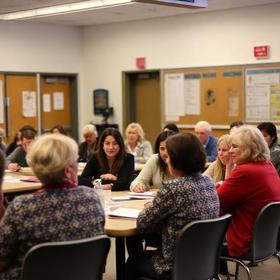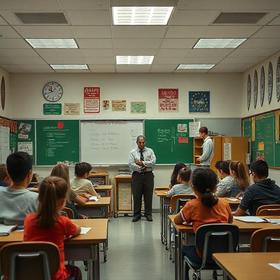Special Education Services in Public Schools: Rights and Resources Explained
Special education services in public schools play a critical role in ensuring that students with disabilities receive the support they need to thrive academically and socially. Federal law requires every district to provide special education services in public schools that meet each child’s unique needs, and parents often navigate a complex system of evaluations, plans, and programs to secure these supports. This guide explains how special education services in public schools work in 2025, outlines student and parent rights, and highlights the most current resources available.
Target keyword used throughout: special education services in public schools.
Understanding the Legal Framework Behind Special Education Services in Public Schools
Special education services in public schools are governed primarily by the Individuals with Disabilities Education Act, which guarantees eligible students a Free Appropriate Public Education. IDEA requires public districts to deliver special education services in public schools based on individualized needs rather than a predetermined program. Parents can read more about public school rights through resources such as the U.S. Department of Education’s IDEA guidance.
Other laws that shape special education services in public schools include:
Section 504 of the Rehabilitation Act
The Americans with Disabilities Act
Every Student Succeeds Act requirements for inclusive access
Together, these laws ensure that special education services in public schools remain accessible, equitable, and tailored to student needs.
How Eligibility for Special Education Services in Public Schools Is Determined
Districts must evaluate any student who may need special education services in public schools. Parents, teachers, or specialists can request an evaluation at any time. The process typically includes:
Cognitive and academic testing
Observations in multiple school settings
Input from families, educators, and service providers
Review of health, behavior, and developmental history
Once assessments are complete, a multidisciplinary team decides whether the child qualifies for special education services in public schools under one of IDEA’s disability categories. In 2025, districts report increased use of multidisciplinary evaluations that incorporate mental health perspectives, helping families secure timely special education services in public schools.
The IEP: Foundation of Special Education Services in Public Schools
An Individualized Education Program outlines the supports, accommodations, and goals required for each student receiving special education services in public schools. An IEP must be reviewed annually and updated whenever needs change.
A strong IEP for special education services in public schools includes:
Present levels of performance
Measurable annual goals
Special instruction and related services
Accommodations for instruction and testing
Inclusion and placement decisions
Transition planning for older students
Families often rely on external guidance when preparing for IEP meetings. For example, Private School Review provides helpful context on how public schools differ from other educational settings (privateschoolreview.com) which can help families compare environments when deciding on placement.
What Special Education Services in Public Schools Typically Include
Special education services in public schools vary widely because they are based on individual needs. In 2025, districts continue to expand options to ensure access.
Common special education services in public schools include:
Specialized instruction in reading, math, or writing
Speech-language therapy
Occupational or physical therapy
Behavioral and mental health supports
Social skills instruction
Assistive technology
Adaptive physical education
Transition and vocational training for secondary students
These supports may occur inside the general classroom, in resource rooms, or in specialized programs. Schools must always aim to keep special education services in public schools within the Least Restrictive Environment, meaning students learn alongside peers whenever possible.
Parent Rights in Special Education Services in Public Schools
Parents have robust rights when accessing special education services in public schools, including:
The right to request evaluations
The right to written notice before services change
The right to participate in IEP decisions
The right to access educational records
The right to dispute decisions through mediation or due process
Many families explore additional guidance through public school resource organizations, including Public School Review (publicschoolreview.com), which provides context on district policies and program differences nationwide.
2025 Updates Impacting Special Education Services in Public Schools
Several developments shape special education services in public schools this year:
Increased teletherapy integration
Districts continue offering teletherapy for speech and mental health services within the framework of special education services in public schools.
Expanded mental health supports
Rising student mental health needs are prompting districts to embed counseling services within special education services in public schools.
Growth of MTSS and early intervention
More public schools use Multi-Tiered Systems of Support to identify students who may eventually need special education services in public schools, allowing earlier identification and more targeted interventions.
Enhanced transition planning
States are strengthening postsecondary readiness requirements, increasing the scope and rigor of transition services within special education services in public schools.
Comparing Special Education Services in Public Schools and Private Schools
Some families explore both public and private options. The structure of special education services in public schools differs significantly from supports offered in private settings.
| Feature | Special Education Services in Public Schools | Private School Services |
|---|---|---|
| Legal Mandate | Required under IDEA and Section 504 | Not required to provide the same level of services |
| Cost | Provided at no cost | Often tuition-based, may charge for added supports |
| Evaluation Requirements | Comprehensive district-funded evaluations | Varies, often requires private evaluations |
| Program Consistency | Standardized but individualized | Highly variable by school |
| Accountability | Federally monitored | Independent oversight |
Families often compare placement options using school data from resources like Boarding School Review (boardingschoolreview.com), particularly when considering specialized boarding programs.
How to Advocate for Special Education Services in Public Schools
Advocacy remains essential for families navigating special education services in public schools. Strategies include:
Keeping detailed records of communication and evaluations
Preparing written requests for assessments or IEP revisions
Bringing questions or outside reports to meetings
Monitoring progress toward goals
Requesting additional assessments when changes occur
Parents who understand district obligations are better equipped to ensure that special education services in public schools meet their child’s needs.
Frequently Asked Questions About Special Education Services in Public Schools
How long does it take to receive special education services in public schools?
Evaluations must be completed within state-defined timelines, often 60 days. Services begin immediately after IEP approval.
Can families request changes to special education services in public schools at any time?
Yes. Parents can request an IEP meeting whenever concerns arise.
Are special education services in public schools available for gifted students?
Giftedness alone does not qualify a child for special education services in public schools, but students who are both gifted and have disabilities may receive services.
Do students need a medical diagnosis?
Not always. Eligibility depends on educational need, though medical input can support evaluations for special education services in public schools.
Conclusion: Ensuring Strong Access to Special Education Services in Public Schools
Special education services in public schools ensure that students with disabilities receive individualized instruction aligned to their unique strengths and challenges. With clear legal protections, expanded program options in 2025, and a structured IEP process, families have significant tools to advocate for appropriate special education services in public schools. When parents stay engaged and informed, students are more likely to receive the support they need to succeed both in school and beyond.














